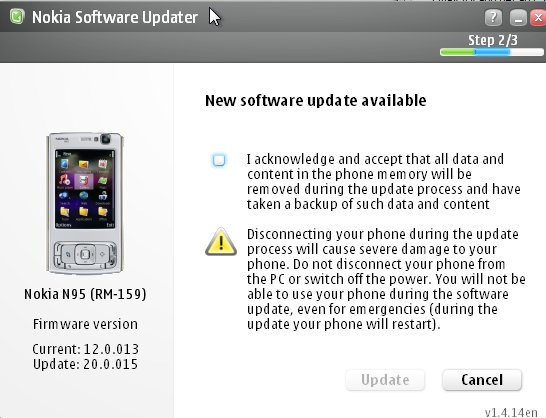While recording this week's All About Symbian podcast, the topic of the firmware in the latest Samsung devices popped up, and Steve argued that until there was an option for an over the air firmware upgrade (or a Nokia Software Update clone), the Samsung would be a challenging choice for a switched-on consumer.
This has got me thinking about the number of features that we now expect from our smartphones. Is it right that we ask for more from each phone? And when these aren't delivered, are we ignoring those phones simply because they're not better than the last phone?
The short answer is yes.
The smartphone, like any area of technology, is constantly changing, and what was once impossible is now a feature that pretty much has to be on the device or people like Steve won't consider buying it. The one just mentioned, the updating of the firmware, is probably the biggest one.
Not only does it give the power user the ability to keep their phone up to date, adding in the newest applications and the relevant bug fixes, but it also helps to dramatically decrease the support costs for mobile networks who supply handsets. The number of early S60 handsets (especially the Nokia 6600) that were swapped out as 'damaged/not working correctly' so the consumers could get their hands on the latest firmware is the sort of tale told around camp fires when the Repair Shop guys go for their annual outings.
But the fact is that the firmware update has changed from being something wished for, to a feature that made it's appearance on a few devices, to where it is now... expected on every device. It's no longer a unique selling point because we expect it to be there.

The number of built in applications has also been on the rise, and we now expect to see a wide range on a handset. The built in application suite has increased in size since the Nokia 7650 to the point where upwards of 50 icons can be found on the launchers of modern phones.
Phones that don't carry the expected software tend to get a rough ride in reviews - the recent Motorola Z10 being an example that I can remember. It did all the requisite things that a phone should do, it had the web browser and messaging client, but by not having software that feels like it should be part of a default installation to a power user led to a feeling of 'smart phone, but not a full smartphone.'
 Again, bundles of software are no longer selling points (remember the days when “comes with software for you to try and buy!” was big news?). We expect the handsets to do more than answer our calls and read our messages. It's no longer big news that you can install your applications (well, at least not on Symbian OS phones).
Again, bundles of software are no longer selling points (remember the days when “comes with software for you to try and buy!” was big news?). We expect the handsets to do more than answer our calls and read our messages. It's no longer big news that you can install your applications (well, at least not on Symbian OS phones).
Currently in the 'USP' field, but rapidly moving towards 'some day all phones will have this' is that of web services tied to the phone. A lot of this is driven by the major players in the handset market, and especially Nokia. The inclusion of a piece of software in the firmware can mean it reaches tens of millions of people over the life of a handset, especially if it is more than just a standalone application, but one that needs a certain amount of web backup. Such as Nokia Maps.
New mapping services will find it especially hard to break through against the installed base of Nokia Maps on S60, although with other handsets and manufacturers out there alternatives can flourish and gain a foothold on other platforms (e.g. Google Maps on Apple's iPhone). But as these products are soon to be expected in any smartphone, manufacturers will have to provide them, either from their own departments or in third party agreements with companies who do provide this service.
 In short, you can't launch 'just a phone' on the market today, you need to have the phone and a fully integrated software suite to go alongside it. With Ovi, Nokia are taking this to an (albeit logical) extreme by providing their software as a service that runs on the handset, through the web browser, or via a native program on your PC. The smartphone is no longer the only part of the equation.
In short, you can't launch 'just a phone' on the market today, you need to have the phone and a fully integrated software suite to go alongside it. With Ovi, Nokia are taking this to an (albeit logical) extreme by providing their software as a service that runs on the handset, through the web browser, or via a native program on your PC. The smartphone is no longer the only part of the equation.
Moore's Law has always provided a reason why the capabilities of electronic devices has consistently and constantly improved. But just as strong as Moore's Law is the demand from the consumer. We expect each device to have more and more functionality, more useful applications, our favourite games, and we expect something new on a regular basis - about twice a year for the average power user I think.
It's because of that, there is a continuing push for innovative products. Sometimes this leads to great products and services; sometimes the service has to slowly evolve and be nurtured (the N-Gage platform for example); sometimes it means new hardware seeps into the 'base' phone design (such as GPS). But it does mean that the smartphone, more than any other technology, is innovating at a fantastic rate. We may demand something more from each iteration, but this simply challenges the companies to keep up the relentless pace of innovation.
Would we have it any other way?
-- Ewan Spence, September 2009
